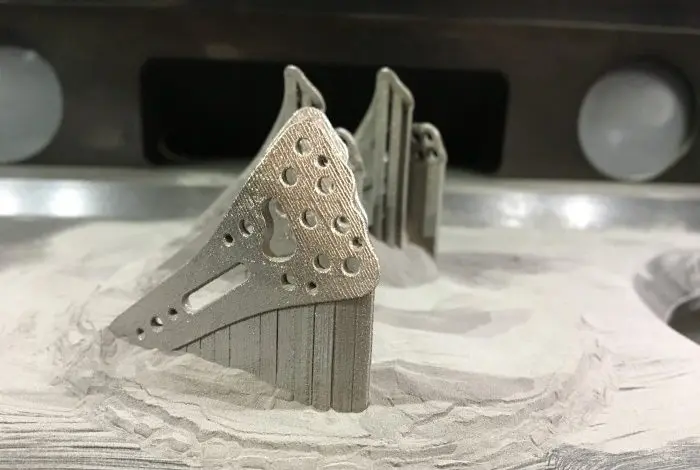Until now, implants and prostheses have mostly been made of steel or titanium. This has disadvantages as these materials do not always adapt optimally to patients and their bones. They can break and require repeat operations. Recent research by Heraeus Amloy together with the University of Graz is on the verge of a breakthrough, demonstrating that amorphous metals can be used to additively manufacture medical implants.
Rib arches, for example, have to withstand around eight million breathing movements every year. It is therefore not uncommon for patients to suffer fatigue fractures because the materials are not elastic enough. A new operation becomes necessary. More durable and better alternatives do not yet exist.
Together with the University of Graz, Heraeus Amloy is researching patient-specific implants and how they can be manufactured and used in close cooperation with clinics as part of the “Clinical Additive Manufacturing for Medical Applications” (CAMed) project. The focus is on the complete production process chain. The project partners are relying on additive manufacturing. 3D manufactured amorphous metal implants are biocompatible and can be individually adapted to the patient’s physique – an advantage particularly in the case of complex fractures. The process also saves material. This is because the laser only builds structures where they are needed.
Manufacturing on Demand

The initial findings from the CAMed project are promising – additively manufactured implants with plus points for patients and hospitals are thus within reach. Other applications such as prostheses or heart valves are also conceivable.
For 3D printing to truly succeed, special materials are needed. This is where amorphous metals, also known as metallic glass, come into play. Such metals have proven to be true all-rounders for medical technology, exhibiting extraordinary properties: because they are formed by shock-freezing metallic melts, the atoms have no way of forming a crystalline lattice and thus solidify in a disordered (amorphous) manner. This disordered internal structure makes the material corrosion-resistant, extremely strong and at the same time highly elastic. As a result, it can be used close to the bone as well as cut to size individually, and even thinner plates are stable.
“Amorphous metals have a number of advantages over steel and titanium: This material combines the benefits of strength and elasticity. It adapts perfectly to the bone, promotes recovery and is also very well tolerated, as it can be implanted without cell deformation,” said Valeska Melde, Head of Marketing & Sales at Heraeus Amloy.
Heraeus Amloy is currently developing new alloys for the production of implants. “As part of the CAMed project, we are currently testing the AMLOY-ZR02 alloy. Its main component is high-purity zirconium and it has already been certified as biocompatible,” explained Jürgen Wachter, Head of the Heraeus Amloy business unit. The company is the only manufacturer worldwide to offer two different process technologies. In addition to additive manufacturing, amorphous metals can also be processed by injection molding. The latter would be particularly suitable for mass production – of surgical screws or instruments.
* This article is reprinted from 3D Printing Media Network. If you are involved in infringement, please contact us to delete it.
Author: Davide Sher



Leave A Comment